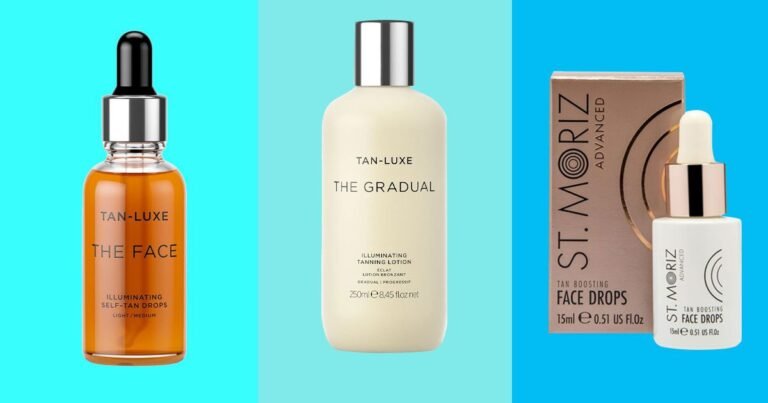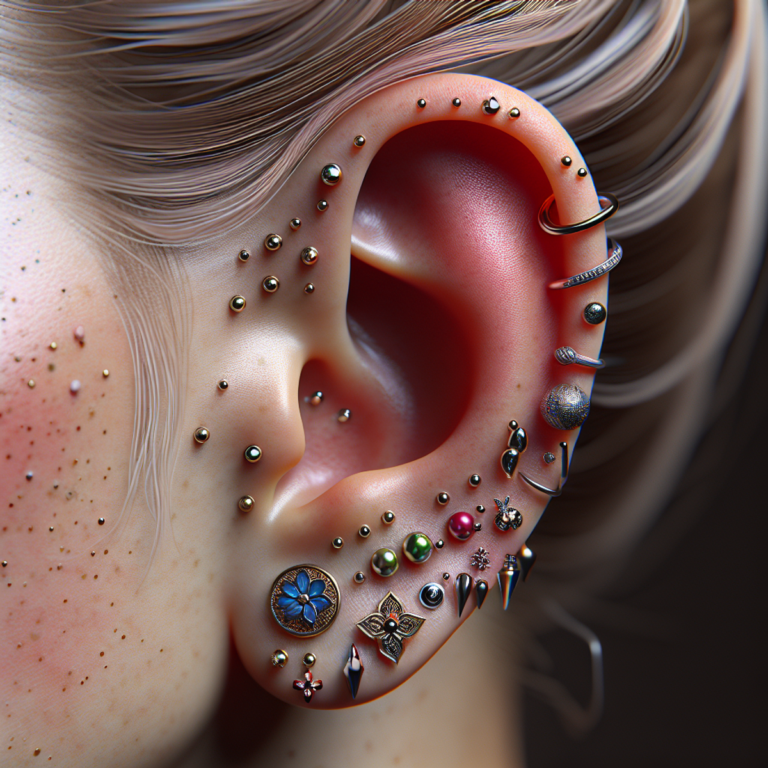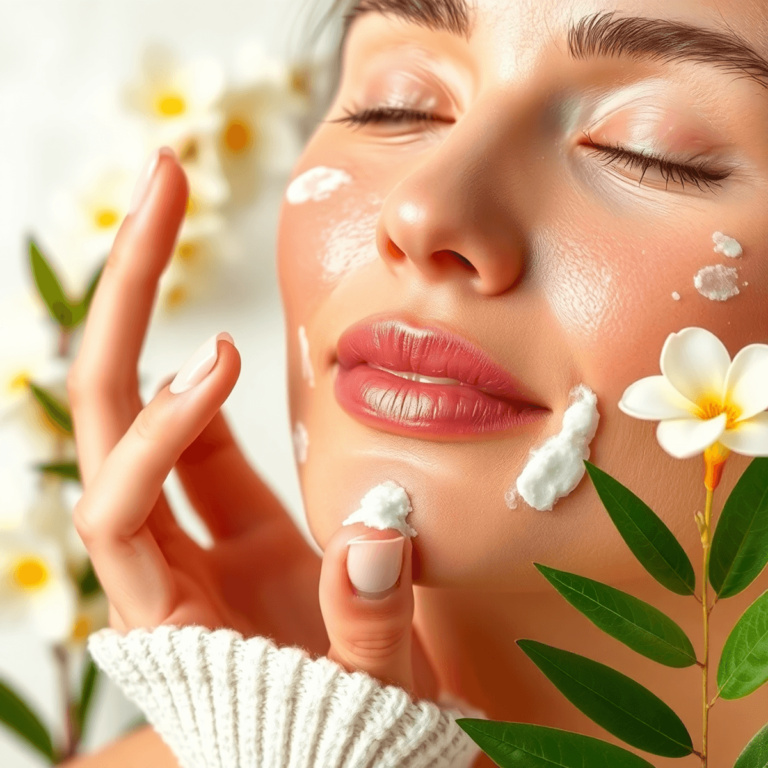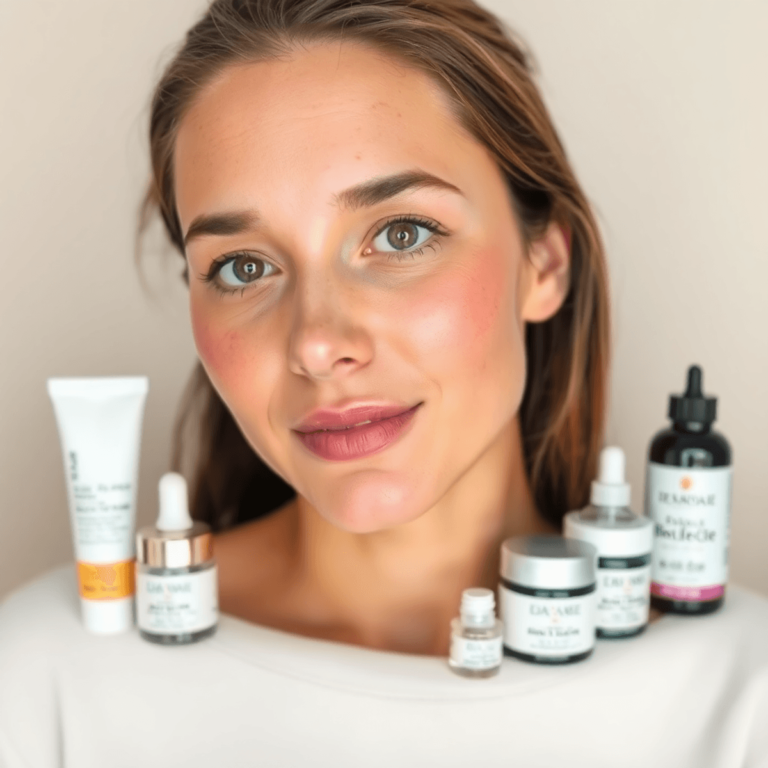Blind pimples: how to get rid of a spot under your skin
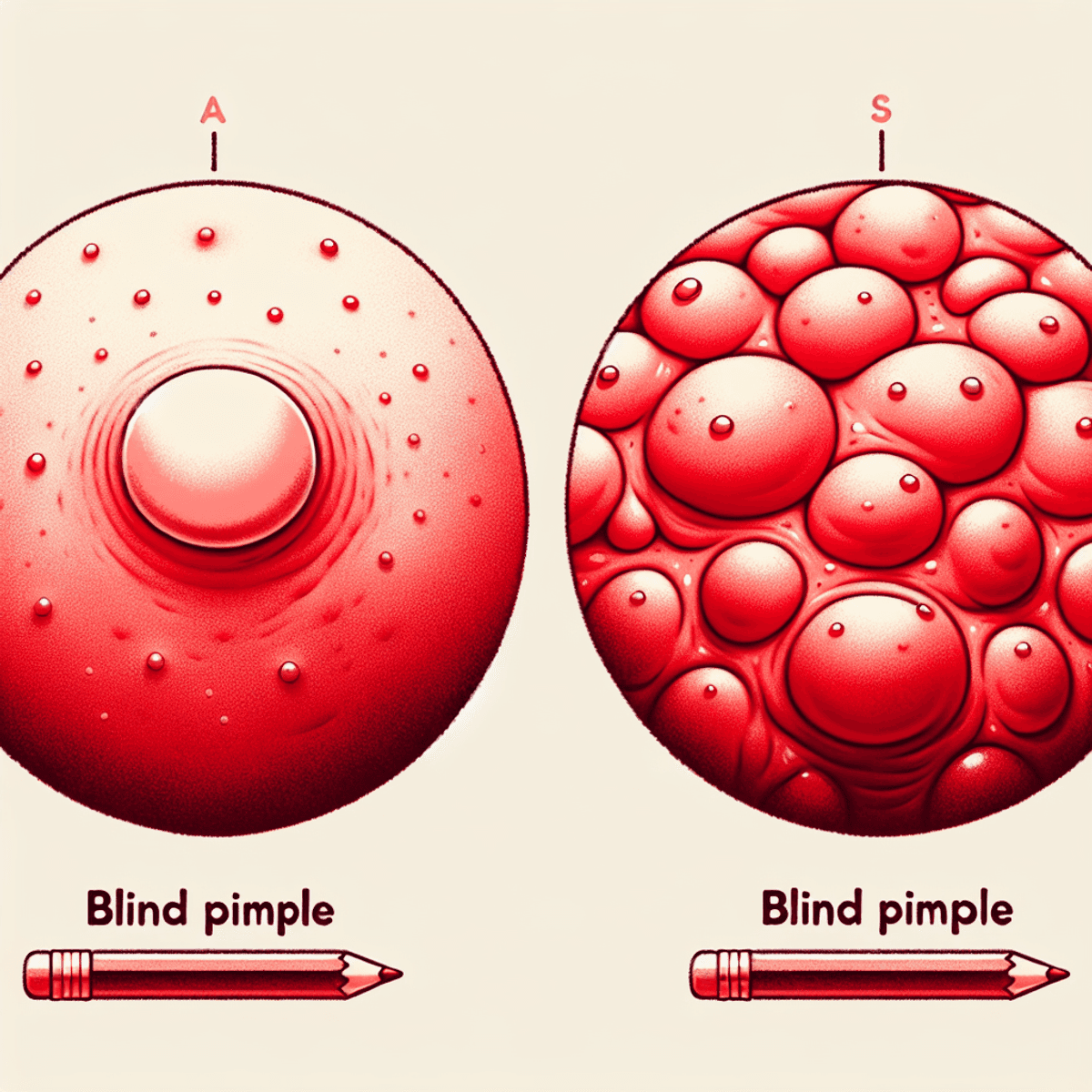
Introduction
You’ve probably experienced it – that painful, stubborn bump lurking beneath your skin. These invisible yet irritating spots are blind pimples, a form of cystic acne that can disrupt your daily life and confidence.
Blind pimples present unique challenges compared to regular breakouts. These deep-seated spots develop under your skin’s surface, creating tender, swollen areas that can persist for days or weeks. Unlike surface-level pimples, you can’t simply pop these troublesome bumps – attempting to do so often leads to scarring and increased inflammation.
The impact of blind pimples extends beyond physical discomfort:
- They can cause significant pain and tenderness
- The spots often appear at inconvenient times
- Their presence can affect self-esteem
- They risk leaving lasting scars if not treated properly
Understanding how to tackle blind pimples effectively is essential for maintaining clear, healthy skin. With the right approach, you can reduce their occurrence and minimize their impact on your skin’s appearance.
Understanding Blind Pimples
Blind pimples are deep-rooted acne lesions that develop beneath your skin’s surface. Unlike regular pimples, these painful bumps don’t form a visible head and can feel like firm knots under your skin. They’re part of a condition called cystic acne, which represents one of the most severe forms of acne.
Key Characteristics of Blind Pimples vs Regular Pimples:
- Location: Blind pimples form deep within the skin layers, while regular pimples appear on the surface
- Appearance: No visible head or whitehead, just a red, swollen area
- Size: Typically larger than regular pimples, often reaching the size of a pencil eraser
- Pain Level: Much more painful and tender to touch
- Healing Time: Take longer to heal, usually 1-2 weeks without treatment
- Scarring Risk: Higher chance of leaving permanent marks
Signs and Symptoms to Watch For:
Early Stage:
- Tender spot under the skin
- Slight redness
- Mild swelling
- Warmth in the affected area
Peak Stage:
- Increased pain and tenderness
- Significant swelling
- Dark red or purplish coloration
- Firm, hard nodule under the skin
Physical Symptoms:
- Throbbing sensation
- Pain when touching the area
- Sensitivity to pressure
- Inflammation in surrounding skin
These under-the-skin pimples often appear on your chin, jawline, and cheeks – areas with a higher concentration of oil glands. They can persist for weeks without proper treatment and may cluster together in severe cases, creating painful, inflamed patches of skin.
The depth of blind pimples makes them particularly resistant to typical surface-level acne treatments. Their location deep within the skin means they require specific treatment approaches targeting the root cause rather than just addressing surface symptoms.
Causes of Blind Pimples
Blind pimples develop through a complex interaction of several factors that work together to create those painful, under-the-skin bumps. Understanding these root causes helps you target the right treatment approach.
1. Dead Skin Cell Buildup
- Your skin naturally sheds dead cells as part of its renewal process
- These cells can become trapped inside your pores
- When mixed with oil, they create a plug that blocks the pore opening
- The blockage prevents natural oils from reaching the skin’s surface
2. Excess Sebum Production
- Your sebaceous glands produce oil (sebum) to keep skin moisturized
- Hormonal changes can trigger increased oil production
- High stress levels stimulate additional sebum secretion
- Genetics play a role in how much oil your skin naturally produces
- The excess oil becomes trapped beneath the blocked pore
3. Bacterial Growth and Inflammation
- P. acnes bacteria naturally live on your skin
- When trapped in a blocked pore, bacteria multiply rapidly
- The bacterial growth triggers your immune system’s response
- White blood cells rush to fight the infection
- This immune response creates inflammation deep under the skin
- The inflammation leads to pain, redness, and swelling
4. Contributing Factors
The following factors can contribute to the development of blind pimples:
- Diet high in refined sugars and dairy products
- Touching your face frequently with unwashed hands
- Using pore-clogging skincare products or makeup
- Excessive sweating without proper cleansing
- Hormonal fluctuations during menstruation, pregnancy, or puberty
- Certain medications that affect hormone levels
The combination of these factors creates an environment where blind pimples thrive. The deeper the blockage occurs in the pore, the more likely it is to develop into a painful blind pimple rather than a surface-level breakout.
Effective Treatment Options for Blind Pimples
Treating blind pimples requires a strategic approach combining different methods to target inflammation, bacteria, and pain. You can start with gentle treatments and progress to stronger options if needed.
1. Home Remedies
Warm Compresses
- Apply a clean washcloth soaked in warm water to the affected area
- Hold for 10-15 minutes, 3-4 times daily
- Helps bring the pimple to the surface
- Reduces pain by increasing blood circulation
- Softens the skin to allow better penetration of topical treatments
Tea Tree Oil Treatment
- Dilute tea tree oil with a carrier oil (1:9 ratio)
- Apply directly to the blind pimple using a cotton swab
- Use twice daily after cleansing
- Contains natural antimicrobial properties
- Reduces redness and inflammation
Ice Therapy
- Wrap ice in a thin cloth
- Apply for 1-2 minutes at a time
- Repeat every few hours
- Helps reduce swelling
- Numbs the area to relieve pain
Green Tea Bags
- Steep a green tea bag in hot water
- Let it cool slightly
- Place on the affected area for 5-10 minutes
- Contains antioxidants that fight inflammation
- Helps reduce redness and swelling
Honey Application
- Use raw, organic honey
- Apply a small amount directly to the blind pimple
- Leave on for 15-20 minutes
- Natural antibacterial properties
- Helps moisturize while fighting bacteria
Apple Cider Vinegar Solution
- Mix equal parts water and apple cider vinegar
- Dab onto the affected area with a cotton ball
- Leave on for 5-10 minutes
- Contains natural acids that help kill bacteria
- Helps balance skin pH levels
These home remedies work best when used consistently and in combination with proper skincare habits. Always patch test new treatments on a small area of skin first to check for any adverse reactions.
2. Over-the-Counter Treatments
The pharmacy shelves offer powerful solutions for treating blind pimples through targeted ingredients that work beneath the skin’s surface.
Benzoyl Peroxide
- Available in concentrations from 2.5% to 10%
- Penetrates deep into pores to kill acne-causing bacteria
- Creates an oxygen-rich environment where bacteria can’t thrive
- Start with lower concentrations to minimize potential skin irritation
- Apply a thin layer directly to the affected area
Salicylic Acid
- Works as a chemical exfoliant to break down dead skin cells
- Dissolves oil and debris within clogged pores
- Available in strengths ranging from 0.5% to 2%
- Can be found in cleansers, spot treatments, and pads
- Helps prevent future breakouts by keeping pores clear
Combination Products
- Look for treatments containing both active ingredients
- Some products include additional soothing ingredients like:
- Niacinamide for inflammation reduction
- Aloe vera to calm irritated skin
- Zinc to regulate oil production
Application Tips
- Clean your face thoroughly before applying treatments
- Use spot treatments at night when skin repair is most active
- Don’t layer multiple active ingredients without patch testing
- Allow products to fully absorb before applying moisturizer
- Be patient – results typically appear within 4-6 weeks of consistent use
Remember to wear sunscreen during the day, as these treatments can increase skin sensitivity to UV rays. If you experience excessive dryness or irritation, reduce the frequency of application or switch to a lower concentration.
3. Medical Treatments from Dermatologists
If blind pimples persist despite trying home remedies or over-the-counter treatments, it’s time to seek professional help. Here are some signs that indicate you should see a dermatologist:
- Blind pimples lasting more than 2 weeks
- Severe pain caused by the blind pimples
- Frequent recurrence of blind pimples in the same areas
- Noticeable scars left behind by previous breakouts
- Negative impact on your self-confidence due to blind pimples
Effective Treatment Options Offered by Dermatologists
Dermatologists have various effective treatment options for stubborn blind pimples:
Prescription Medications
These medications are prescribed by dermatologists and can be used to target specific issues causing blind pimples:
- Topical antibiotics: Such as clindamycin, these medications are applied directly to the skin and work by targeting bacteria deep within the pores.
- Retinoids: These medications help prevent future breakouts by regulating cell turnover and promoting healthy skin cell production.
- Oral antibiotics: In cases of severe inflammation, oral antibiotics may be prescribed to combat the underlying infection.
In-Office Procedures
In addition to medications, dermatologists also offer various in-office procedures that can provide immediate relief or long-term benefits:
- Cortisone injections: For large, painful cysts, cortisone injections can provide rapid relief by reducing inflammation.
- Drainage and extraction: This procedure involves safely draining and extracting the contents of cysts or pimples under sterile conditions.
- Chemical peels: Chemical peels can help improve overall skin texture and prevent future breakouts by exfoliating dead skin cells.
Advanced Treatments
In more severe cases where other treatments have failed, dermatologists may recommend advanced therapies:
- Isotretinoin (formerly known as Accutane): This powerful medication is reserved for severe cases of acne that haven’t responded to other treatments.
- Photodynamic therapy: Using light energy, this treatment targets and kills acne-causing bacteria while reducing oil production in the skin.
- Birth control pills: For female patients with hormonal acne, birth control pills may be prescribed to regulate hormone levels and reduce breakouts.
Creating a Customized Treatment Plan
When you visit a dermatologist for your blind pimples, they will create a personalized treatment plan based on several factors:
- Severity of your condition
- Skin type and sensitivity
- Previous treatment history
- Lifestyle factors (such as diet and stress levels)
- Medical history (including any underlying conditions)
By considering these factors, dermatologists can tailor their approach to suit your specific needs and increase the chances of successful treatment.
Monitoring Progress and Adjusting Treatments
It’s important to note that professional treatments often require multiple sessions for optimal results. Regular follow-up appointments allow dermatologists to monitor your progress, assess how well the current treatment is working, and make any necessary adjustments along the way.
Remember that everyone’s skin is unique, so what works for one person may not necessarily work for another. Patience is key when it comes to treating stubborn blind pimples, but with the right guidance from a dermatologist, you can achieve clearer skin over time.
Preventive Measures Against Blind Pimples
A consistent skincare routine creates a strong defense against blind pimples. Your daily regimen should include:
- Double cleansing: Use an oil-based cleanser followed by a water-based cleanser to remove makeup, dirt, and excess sebum
- Gentle exfoliation: 2-3 times per week with a BHA or AHA product
- Moisturizer application: Non-comedogenic moisturizer after cleansing
- Sunscreen protection: Broad-spectrum sunscreen with at least SPF 30 during daytime
Your skin needs specific attention in different areas prone to blind pimples:
Face:
- Wash twice daily with lukewarm water
- Pat dry with a clean towel
- Avoid touching your face throughout the day
Body:
- Shower after sweating
- Wear loose, breathable clothing
- Change workout clothes immediately after exercise
Essential hygiene practices:
- Clean phone screens regularly
- Change pillowcases weekly
- Keep hair clean and away from face
- Use fresh towels for face-drying
Product selection tips:
- Choose “non-comedogenic” labeled products
- Patch test new skincare items
- Avoid heavy oils and thick creams
- Look for products containing niacinamide or zinc
Remember to maintain consistency with your chosen routine – switching products too frequently can irritate your skin and trigger breakouts. A gentle, regular approach yields better results than aggressive treatments.
Your skin needs time to adjust to new routines – allow 4-6 weeks before expecting visible improvements. Track your skin’s response to identify which practices work best for your specific needs.
Lifestyle Adjustments for Clearer Skin
Your daily habits play a crucial role in managing blind pimples. Making strategic changes to your lifestyle can significantly reduce breakouts and promote healthier skin.
Diet Modifications for Better Skin
- Cut back on high-glycemic foods like white bread and sugary snacks
- Reduce dairy consumption, especially processed varieties
- Limit chocolate and greasy foods that can trigger oil production
Skin-Boosting Foods to Include
- Omega-3 rich fish (salmon, mackerel)
- Zinc-packed foods (pumpkin seeds, nuts)
- Antioxidant-rich berries and leafy greens
- Vitamin A sources (sweet potatoes, carrots)
Stress Management Techniques
- Practice deep breathing exercises for 5-10 minutes daily
- Incorporate regular physical activity:
- 30 minutes of cardio
- Yoga or stretching
- Outdoor activities for vitamin D exposure
- Try meditation apps or guided relaxation
- Get 7-9 hours of quality sleep each night
Hydration and Sleep
- Drink 8-10 glasses of water daily
- Use a humidifier in dry environments
- Maintain consistent sleep patterns
- Choose breathable pillowcases
Additional Lifestyle Tips
- Keep hair clean and away from face
- Clean phone screens regularly
- Change face towels frequently
- Avoid touching face throughout day
- Use clean makeup brushes and tools
Regular implementation of these lifestyle changes supports your skin’s natural healing process and helps prevent future blind pimples from forming.
Dealing with Recurring Blind Pimples: Long-Term Solutions
Persistent blind pimples require a strategic approach for lasting relief. You’ll need to identify your specific triggers and work with skincare professionals to develop an effective treatment plan.
Common Triggers to Track:
- Hormonal fluctuations during menstrual cycles
- Specific skincare products or makeup
- Environmental factors like humidity
- Medication side effects
- Genetic predisposition
Professional Treatment Options:
Prescription Medications
- Topical retinoids (Tretinoin, Adapalene)
- Oral antibiotics for severe cases
- Birth control pills for hormone-related breakouts
- Spironolactone for women with hormonal acne
Advanced Treatments
- Regular chemical peels
- Blue light therapy sessions
- Isotretinoin for severe cases
- Cortisone injections for individual cysts
Creating Your Treatment Timeline:
- Months 1-3:Start with prescribed topical treatments
- Document trigger patterns
- Establish consistent skincare routine
- Months 4-6:Evaluate treatment effectiveness
- Adjust medications as needed
- Consider hormonal therapy options
- Months 7-12:Incorporate preventive treatments
- Schedule maintenance procedures
- Fine-tune skincare regimen
Tracking System Setup:
- Keep a daily skin journal
- Photograph your skin changes
- Note environmental conditions
- Record food consumption
- Monitor stress levels
- Document sleep patterns
Regular dermatologist visits help adjust your treatment plan based on your skin’s response. Some patients might need combination therapy, mixing different treatment approaches for optimal results.
Removing Pimple Marks: Natural Remedies vs Professional Treatments
The journey to clear skin doesn’t end when blind pimples heal – many people struggle with stubborn marks left behind. You have two main paths for treating these post-inflammatory marks: natural remedies and professional treatments.
Natural Remedies for Pimple Marks
- Aloe Vera: Apply pure aloe gel directly to scars twice daily. Its natural healing properties reduce inflammation and promote skin regeneration
- Vitamin E Oil: Gently massage vitamin E oil into scars before bedtime to boost skin repair
- Honey: Use raw honey as a spot treatment mask for 15-20 minutes to fade dark marks
- Rosehip Oil: Rich in vitamin A and essential fatty acids, this oil helps rebuild damaged skin tissue
Note: Avoid lemon juice and other citrus-based treatments – they can cause skin sensitivity and damage
Professional Treatments
Laser Therapy
- Fractional laser treatment breaks down scar tissue
- IPL therapy targets dark spots and redness
- Requires 3-6 sessions for optimal results
Chemical Peels
- Light peels with glycolic or salicylic acid
- Medium-depth TCA peels for deeper scarring
- Professional-grade treatments remove damaged skin layers
Microneedling
- Creates tiny punctures to stimulate collagen production
- Can be combined with PRP (platelet-rich plasma) therapy
- Helps rebuild skin texture from within
Cost Considerations
- Natural remedies: $10-50 per product
- Professional treatments: $150-500 per session
- Insurance rarely covers cosmetic procedures
The choice between natural and professional treatments depends on scar severity, budget, and desired timeline for results. Severe scarring typically responds better to professional interventions, while mild marks might improve with consistent natural treatment.
Conclusion: Embracing a Comprehensive Approach to Managing Blind Pimples
Managing blind pimples requires a personalized and multi-faceted strategy. Your journey to clearer skin starts with:
- A consistent skincare routine using proven ingredients like benzoyl peroxide and salicylic acid
- Natural remedies such as warm compresses and tea tree oil for immediate relief
- Professional treatments when needed, including antibiotics or cortisone shots
- Smart lifestyle choices – balanced diet, stress management, and proper sleep
Remember: what works for others might not work for you. Start with gentle treatments and observe your skin’s response. Track your triggers and adjust your approach accordingly. Patience is essential – results take time, but a dedicated skincare routine will lead to lasting improvements.
Need professional help? Don’t hesitate to consult a dermatologist for severe or persistent cases. They can create a tailored treatment plan combining home care, medical interventions, and preventive strategies to help you achieve and maintain clear, healthy skin.
Your skin deserves attention and care – make your skin health a priority today.
FAQs (Frequently Asked Questions)
What are blind pimples?
Blind pimples, also known as cystic acne, are painful, under-the-skin blemishes that do not have a visible head. They occur when pores become clogged with excess oil, dead skin cells, and bacteria.
How do blind pimples differ from regular pimples?
Blind pimples differ from regular pimples in that they form deeper within the skin and do not come to a head. Regular pimples typically have a visible white or yellow center filled with pus.
What causes blind pimples?
Blind pimples are caused by clogged pores due to excess oil production, dead skin cells, and bacteria. These factors contribute to inflammation and worsen the condition of cystic acne.
What are some effective home remedies for treating blind pimples?
Effective home remedies for treating blind pimples include warm compresses to relieve pain and reduce inflammation, and tea tree oil, which acts as a natural antimicrobial agent against bacteria.
When should I consult a dermatologist for blind pimples?
You should consult a dermatologist if you experience severe cases of cystic acne that do not respond to over-the-counter treatments. Dermatologists can prescribe topical antibiotics and develop a tailored treatment plan.
How can I prevent blind pimples from forming?
Preventive measures against blind pimples include maintaining a consistent skincare routine, using non-comedogenic products, avoiding excessive touching of the face, and managing stress levels to reduce hormonal fluctuations.


